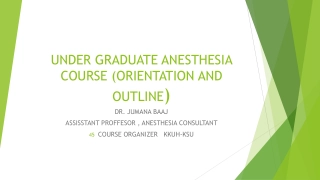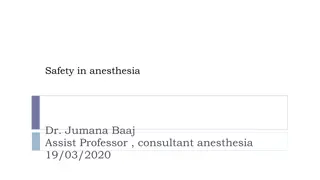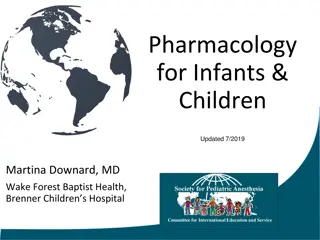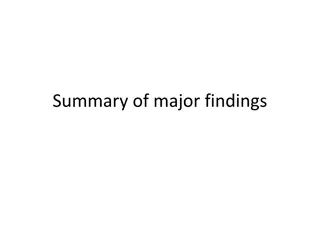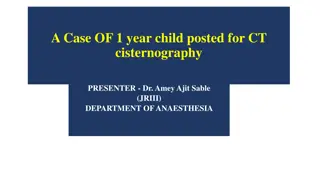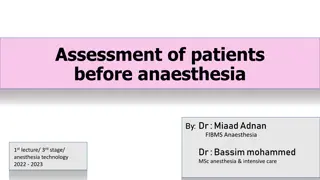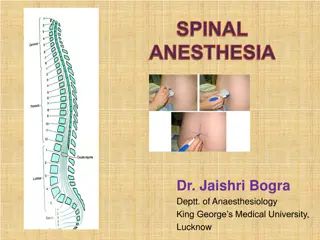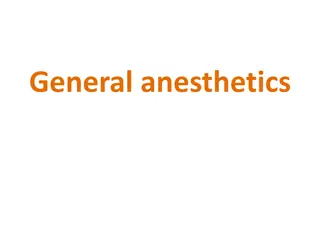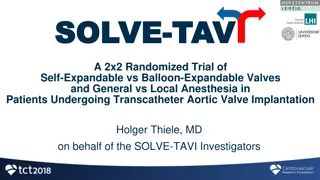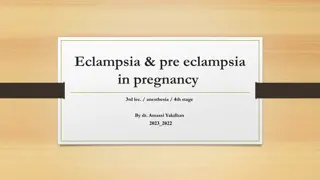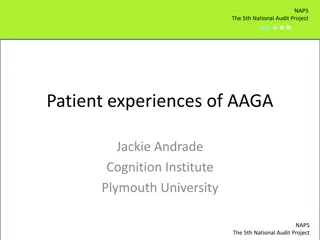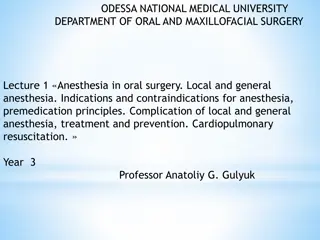Anesthesia in Pediatric Epiglottitis: Update 2019
Infectious and non-infectious etiologies of epiglottitis, along with epidemiology, signs, symptoms, and differential diagnosis are explained in this comprehensive guide. Anesthetic techniques and antibiotic regimens for treating pediatric patients with epiglottitis are detailed, aiding in the identification and management of this condition.
Download Presentation

Please find below an Image/Link to download the presentation.
The content on the website is provided AS IS for your information and personal use only. It may not be sold, licensed, or shared on other websites without obtaining consent from the author.If you encounter any issues during the download, it is possible that the publisher has removed the file from their server.
You are allowed to download the files provided on this website for personal or commercial use, subject to the condition that they are used lawfully. All files are the property of their respective owners.
The content on the website is provided AS IS for your information and personal use only. It may not be sold, licensed, or shared on other websites without obtaining consent from the author.
E N D
Presentation Transcript
Anesthesia for the Pediatric Patient with Epiglottitis Updated 7/2019 Jennifer Chiem, MD Seattle Children s Hospital Seattle, WA USA GLOBAL
Disclosures No relevant financial relationships
Learning Objectives: Learners will be able to identify signs and symptoms of epiglottitis Learners will be able to describe anesthetic techniques for a patient with epiglottitis Learners will be able to describe antibiotic regimens used to treat epiglottitis
Overview of Epiglottitis Infectious Etiology Haemophilus influenza Type B (HiB), most common Haemophilus influenza Type A, F, and non- typable Streptococci, including Group A Streptococci Staphylococcus aureus
Overview of Epiglottitis Non-infectious Etiology Trauma: thermal injury Foreign Body Ingestion Caustic Ingestion Picture: erythematous oropharynx
Overview of Epiglottitis Epidemiology - Decreased incidence with HiB vaccination, although epiglottitis can still occur - Median age increased from 3 years old to 6-12 years old in vaccinated patients - Estimated epiglottitis rates: 0.6-0.8 cases per 100,000 Risk Factors - Immune deficiency - Lack of HiB immunization
Signs and Symptoms of Epiglottitis Respiratory Distress - Stridor - Tachypnea - Anxiety - Refusal to lie down - Sniffing or Tripod posture Dysphagia Drooling Fever Sore Throat Picture: Toddler in tripod position (top); Toddler drooling (bottom)
Differential Diagnosis of Epiglottitis Viral laryngotracheobronchitis (Croup) Gradual Onset Low grade fever Stridor Hoarseness Barking Cough
Differential Diagnosis of Epiglottitis Bacterial tracheitis Acute onset Fever Imaging studies X-ray Irregular tracheal wall Normal epiglottis
Differential Diagnosis of Epiglottitis Retropharyngeal abscess Less toxic appearance Fever may be present Imaging studies (CT scan) will help determine if abscess is present
Differential Diagnosis of Epiglottitis Foreign Body History Lack of fever Acute onset Can cause partial vs. complete airway obstruction Foreign body in the airway
Differential Diagnosis of Epiglottitis Diphtheria Gradual onset Sore throat Low grade fever Gray, sharply demarcated membrane in the oropharynx Gray membrane in the oropharynx
Diagnosis of Epiglottitis History and clinical presentation Radiologic imaging can help to confirm diagnosis, but not always necessary - Enlarged epiglottis Thumb Sign on lateral neck X-ray Lateral neck X-ray
Airway Management of Epiglottitis Determine severity of obstruction Determine if intubation is necessary vs. observation Involve anesthesiologist and otolaryngologist as soon as possible The provider with the most airway experience should make first intubation attempt
Airway Management of Epiglottitis If patient is able to maintain airway Transport to operating room for airway management Minimize distress to the patient (no awake IV, parental presence if appropriate) Mask induction with Sevoflurane/Halothane try to maintain spontaneous ventilation Propofol, Ketamine, and/or Dexmedetomidine to maintain spontaneous ventilation Consider Glycopyrrolate to minimize secretions First intubation attempt with advanced airway equipment (bougie, video laryngoscopy vs. fiber-optic scope) Back up: tracheostomy tray set up
Airway Management of Epiglottitis If Patient is not able to maintain airway Bag valve mask Transport, if appropriate, to operating room for airway management Mask induction with Sevoflurane/Halothane try to maintain spontaneous ventilation Propofol, Ketamine, and/or Dexmedetomidine to maintain spontaneous ventilation First intubation attempt with advanced airway equipment (bougie, video laryngoscopy vs. fiber-optic scope) Back up: tracheostomy tray set up
Airway Management Tips At least a half size smaller than age appropriate endotracheal tube should be used due to tissue swelling Do NOT use a supraglottic airway (laryngeal mask airway) as this can cause further airway obstruction
Antimicrobial Treatment Ideally draw cultures prior to starting antibiotics Empiric treatment Third generation cephalosporin (ceftriaxone, cefotaxime) AND anti-staphylococcal agent (vancomycin) Once susceptibility results are available, adjust antibiotic regimen Duration of treatment: approximately 7-10 days
Post-Operative Management All epiglottitis patients should be monitored in an intensive care unit If the patient is intubated, after 2-3 days of antibiotics, can assess for possible extubation
Post-Operative Management Extubation considerations Resolution of epiglottic/supraglottic swelling Air leak Can swallow comfortably
Conclusions: Haemophilus influenza Type B is the most common cause of epiglottitis Provider with the most airway experience should make first attempt at intubation Have all the advanced airway equipment available and prepared, including tracheostomy set up
References: 1. Abdullah, Claude. Acute epiglottitis: Trends, diagnosis, and management. Saudi Journal of Anesthesia, 2012 Jul-Sept; 6(3): 279-281. 2. Woods, Charles. Epiglottitis (supraglottitis): Clinical features and diagnosis. UpToDate. Sept 2018. 3. Woods, Charles. Epiglottitis (supraglottitis): Management. UpToDate. Sept 2017. 4. Images from Creative Commons


